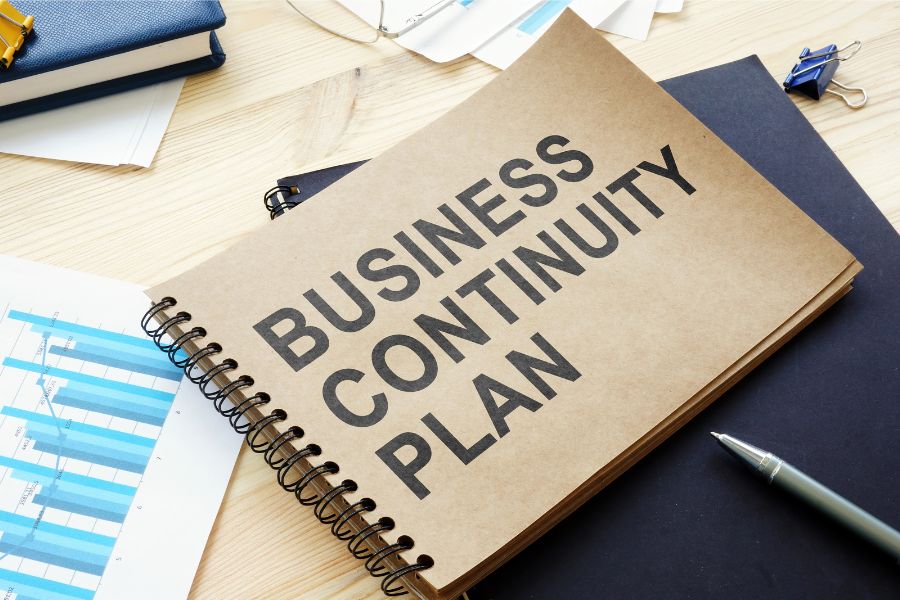Businesses of all scales and sizes should be well-prepared for unanticipated incidents and accidents. The world is full of uncertainties, and disasters like natural calamities, power outages, cyber-attacks, and other accidents can happen anytime. And for your business to remain robust and unstirred by these unfortunate circumstances, you must create a continuity plan.
If you’ve recently experienced a crisis and realized how disorganized and chaotic your reactions and responses toward it are, this only means that you have a faulty backup plan. Leaders should be able to spot and assess the loopholes of contingency actions to keep the business afloat when challenges strike.
With that said, building your lifesaver tactics is crucial to creating a sturdy business continuity plan. To help you achieve that, below are seven tips.
1. Hire Assistance
Business continuity plans are seldom appreciated until a disaster disrupts a company’s routine operations. Businesses can suffer unanticipated setbacks that affect efficiency and revenue and compromise brand and reputation. Before such things happen, it’s crucial to accept that some things are beyond your control and that you should welcome the idea of hiring third-party help and support.
An outage in the power grid can cause business operations to be disrupted and cause downtime. Disasters and environmental calamities can strike anytime, and when they do, all your systems and software will remain unusable. Fortunately, you can rely on managed IT services because they know how to resolve these predicaments. How MSPs assist in disaster recovery can be beyond what you and your internal team can do. Unplanned events can be greatly minimized with the help of managed service providers (MSPs).
An effective business continuity plan ensures a business’s ability to resume regular operations after a disaster. If you know how to handle an unplanned event and get timely support from a managed IT service company, you can keep your business running even in a crisis. It will improve the corporate image, and you can earn the trust of your customers and stakeholders as they see how well you handle the disaster.
2. Establish Goals
Before anything else, a business continuity plan should have goals and objectives. However, this should not be within your internal IT department’s constraint. These goals should derive from and apply to all other departments like operations, marketing, sales, and human resources.
The ultimate goal of creating a business continuity plan is to minimize disruptions to essential business processes. And everyone should be involved in setting goals for the business to get back on track successfully.
Each business is unique, so you will have to identify the goals and objectives that are most important to the way you do business. These goals will be guiding factors as you assess risks, develop business continuity plans, and develop potential recovery strategies. Therefore, ensure that the goals are solid and helpful for your company to get back on its feet.
3. Designate Members in the Business Continuity Department
One crucial step is to delegate a separate entity for the business continuity department. This particular team’s composition depends on the company’s size and continuity objectives. However, it will be helpful if each department has one representative member.
This team should be able to plan the action steps well in case disasters or system compromises happen. They should create disaster reaction steps, plan and decide the communication strategies and methods, and formulate a timeline for when the company should be able to recover to normal operations.
Do you want to ensure your business’ safety by creating a continuity plan?
Contact Growth Hackers
Within the organization, every department should have a contact list of the business continuity department. Everyone needs to know each member and how to communicate with them when disasters strike. Put up boards within the company regarding this team’s contacts, the people’s job roles and titles, and other helpful information. It will allow everyone in the company to seek help from these key people during a crisis.
Explain everyone’s roles and responsibilities in a detailed manner so that everyone knows what to expect. Business managers should communicate business continuity processes to every team member to be aware of such likely circumstances. Additional team members will be trained by this team as well as prepare standards for the project.
4. Assess Your Risks in the Business
The next step to creating a business continuity plan is risk assessment. Even if a smooth sea never made a skilled sailor, it doesn’t mean that you always want to sail under rough weather conditions. Every business involves a lot of risks during operations. In this aspect, you should consider your business operations and critical activities from an internal and external perspective. Your business continuity plan must also consider all possible scenarios and threats. It could be possible that your business has more risks and hazards than other businesses and competitors.
There are variables that you should take into consideration. For instance, your geographical location may pose threats related to weather and environmental concerns. Environmental threats include storms, earthquakes, typhoons, tsunamis, etc. Moreover, there will be a greater risk of power outages where electricity supplies are less reliable.
Another risk factor is your office and business structure; you should consider potential health and safety hazards. Check your fire safety precautions and assess how safe and well-protected your employees are. Also, enterprise cybersecurity is another risk factor if your business stores data and operates online. With the growing cases of cybercrime worldwide, cybersecurity is more critical than ever.
Lastly, evaluate how flexible your management and clients are. Determine how long they can operate at reduced or minimum capacity. Identifying and mitigating risks associated with your organization’s vulnerabilities is the goal of a risk assessment. Also, don’t forget to legalize your business documents with a notary to avoid another risk. For this, it’s not as complicated as it seems. Just go to Google or Bing and write “notary near me”. You will surely find the right notary for your needs. Good luck!
5. Gather Feedback and Ideas From Key People
For business continuity plans to be successful, it’s necessary to gather opinions and recommendations from others. Organizational continuity issues occur at all levels, not just executives and upper management. Hence, business managers should speak to all members and discover their suggestions and ideas.
Ideally, you must interview key members of your organization’s teams in various departments to ensure your analysis is comprehensive. Ensure you select individuals who are familiar with their department’s operations and who understand its importance to the organization. Ask these key people about the possible threats they can spot when disasters and unprecedented situations occur.
You may get their opinions on how they can retain the same level of work or service even when there is a compromise during business operations. Ask their ideas about which areas of their responsibilities will be most impacted during disasters and accidents. Tell them to be honest with their thoughts and opinions, and you might just be able to get valuable insights from them.
6. Document the Steps and Train Employees
Finally, business continuity plans should come in writing form. There is no point in having a plan if no one knows about it. To ensure your staff knows where to find, what it contains, and how to use your business continuity plan, you must communicate and integrate it into the company’s policies and culture. The complete continuity plan should come in clear action steps that are easy to understand and implement in every department and team.
Step-by-step procedures should be documented. Staff should be aware of the plan, and clear responsibilities should be assigned. Whether you have an internal system or your company uses several collaboration tools and interfaces, ensure to integrate the business continuity plan into those platforms. You can also produce hard-printed copies and distribute them.
Aside from your internal employees, sharing and integrating your business continuity plan with other people involved in your operations is also a great idea. For instance, it would be helpful for stakeholders, suppliers, business partners, and customers to know about your business continuity steps. When an incident occurs, it will be easier to communicate with these key people when they already know your business continuity steps.
It’s time to create a business continuity plan before a crisis strikes!
7. Test And Modify
A business continuity plan may never be perfect. Hence, you shouldn’t stop there even when you’ve already launched your business continuity plan. To manage risks effectively, you must test your business continuity plan, and it may take several tests. There might be gaps, loopholes, and bottlenecks in these plans, so it’s essential to keep testing and modifying them.
There should be a checklist for business continuity testing to ensure your organization’s success. Business continuity plans are created and tested extensively. It is not uncommon for organizations to let a plan sit after that job is completed while they focus on other, more critical tasks. Unfortunately, some of the steps might need to be improved, but the team may easily forget to prioritize them.
The continuity plan must be updated as technology changes and the team members evolve and change. At least once a year, bring key personnel together to review and modify the plan. Discuss what steps need to be changed or improved. Consult with staff to incorporate their feedback into the plan. Require all business units, including branch offices and remote locations, to review the plan. And they might see something to change or add.
Final Thoughts About the 7 Steps to Create a Business Continuity Plan
Every level of your organization should consider a business continuity plan to ensure smooth business operations at all times. Hopefully, you can consider administering the steps above to make your business continuity plan robust. Take advantage of hiring professional help, and be open to feedback and suggestions from key people in various departments.
Growth Hackers provides outstanding growth marketing services helping businesses from all over the world grow. There is no fluff with Growth Hackers. We help entrepreneurs and business owners create their business continuity plan, increase their productivity, generate qualified leads, optimize their conversion rate, gather and analyze data analytics, acquire and retain users and increase sales. We go further than brand awareness and exposure. We make sure that the strategies we implement move the needle so your business grow, strive and succeed. If you too want your business to reach new heights, contact Growth Hackers today so we can discuss about your brand and create a custom growth plan for you. You’re just one click away to skyrocket your business.







